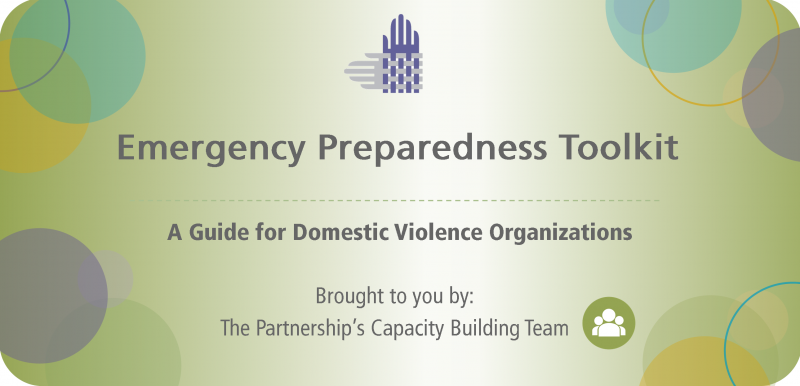Emergency Preparedness Toolkit
A Guide for Domestic Violence Organizations
Emergency Preparedness Toolkit | Download the Webinar
Emergencies are inevitable; but by developing safety plans and procedures in advance, your organization can effectively identify and address impending hazards, as well as prepare effective measures to aid recovery after the event. The Partnership’s Emergency Preparedness Toolkit includes a compilation of trusted emergency preparedness resources and guidance materials. Whether you work for a residential or non-residential domestic violence program, this toolkit can help you plan for and respond to emergencies.
Preparing a safety plan with this toolkit can:
- Prevent re-traumatization for survivors in shelter and non-shelter settings;
- Prevent fatalities and injuries;
- Provide confidence for community stakeholders
As your statewide domestic violence coalition, the Partnership is always here to provide customized technical assistance to support you in your emergency preparedness and response efforts. We can also connect local programs to support cohesive regional responses to emergencies. Please contact our help desk at info@cpedv.org to request support. We are ready to assist you!
As Dr. Elaine Enarson states:
“Disaster planning is not often a priority in [domestic violence] shelters or transition homes, where your work focuses on daily survival issues. But your shelter is the only home [survivors] in crisis have, and it will be directly or indirectly impacted should a major disaster hit your neighborhood. Working through worst-case scenarios to assess risks, vulnerabilities, and resources will help your program respond when [survivors] need you now more than ever. Staff, volunteers, and board members will also benefit as potential disaster victims and as emergency responders to shelter residents and clients.” [1]
1 “Domestic Violence Advocacy: A Disaster Response (Facilitator Guide).” The National Domestic Violence Hotline. 2014. 1-62. Web. 21 June 2016. <http://www.thehotline.org/resources/download-materials/>.


